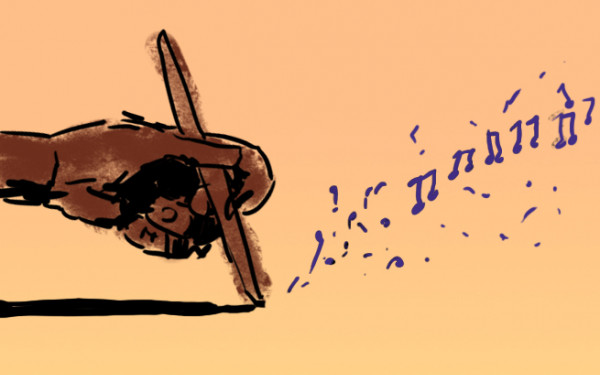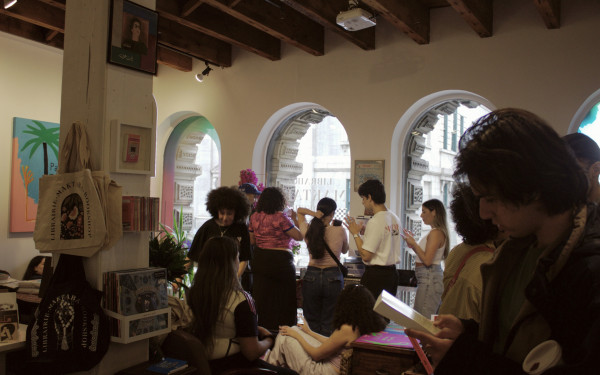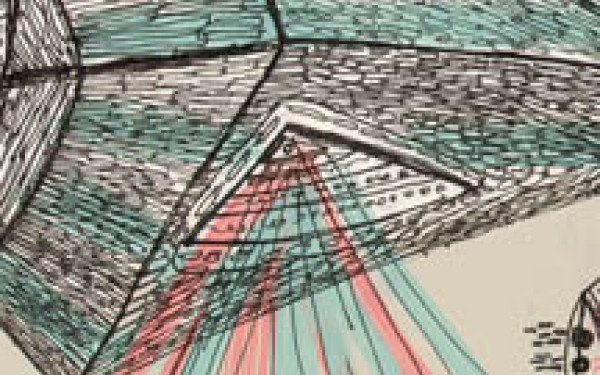Ariel Pink Is Way More Than You Think
He’s Not a Monster, He’s an Artist
“We are afraid of monsters because they are ugly.”
So goes one of Ariel Pink’s most lucid tweets. Of course, any sense of austerity is immediately blown off by a silly GIF, sitting directly under the statement, a quick clip of a lo-fi monster, awkwardly flailing about.
This is a pretty succinct image of Pink: one part California pop-iconoclast, one part ruthy monster. Since Animal Collective’s D.C. label Paw Tracks re-released Pink’s ‘99 record The Doldrums, Pink’s had one of the strangest, most unique trajectories in modern pop. And now, in the wake of seeing him at Le National on Friday, and a couple months worth of seriously considering him as an artist, and a public figure, I can honestly say I have been dreading this article.
The reason for this dread is that Ariel Pink might be the most complex, genuine, partially inauthentic, unexplainable phenomenon to hit pop music in the 21st century. Every single time I’ve tried to describe an aspect of him, or qualitatively break down his actions, try to find intentions within his persona, I either draw up a blank, or find myself thinking, “Well, yeah, that’s possible, but then again, this could all just be a joke.”
When I spoke to him after his set, I mentioned that he cancelled all of his interviews, including one with me. He caught my eye and shrugged, looked anxious, quickly spoke silliness to defuse what he saw as a situation in need of defusal, with what he probably saw as a dangerous, scoop-craving muckraker, just trying to slip him up and tear his ass out with words. “People have a terrible habit of writing down the things I say,” he says to me. “They write them down, and then they think I mean them!”
Pink’s had a rough couple of months, though you wouldn’t be able to tell it from his manner. Live, he’s all jokes and silliness; for his Montreal set, he greeted the crowd in glitter spiked nine inch heels, piss-yellow punk rave pants, a pink grandma’s sweater, and hair like a wild tumbleweed, looking like some combination of Drop Dead Fred, Sid Vicious, and Siouxsie Sioux, with a quivering, ecstatic, over-the-top stage persona to match.
People are always trying to put Pink into a box. People have jumped to call him a misogynist, a bully, a shell of pop idol themes, a fake. But that’s a disservice; Ariel Pink is so much more than any words anyone has ascribed to him thus far. He’s not easily distinguished, he can’t be cut up, examined, pieced back together and repurposed. He’s not like that – he’s more than that, he doesn’t fit inside any of the million boxes his fans and haters are all trying to place him into. No, I don’t think he’s a misogynist. No, I don’t think he’s just looking for attention, or, at least, not in a way that’s any less legitimate than any other celebrity.
No, I think Pink is an artist as confused with himself as the rest of the world seems to be. In fact, the only insider information on his motives Pink seems to have, is that he realizes he can’t be cemented down into anything, be it influence, genre, motivation, ideals, anything. He changes ideas on a dime, the most constant thing about him being his penchant for change, his seemingly chronic fear of stagnancy. I think this has always been true – you can hear it in all of his music, you can see it in anecdotes from his earliest days in L.A.
The man is about a million different versions of himself, and he seems to prove it over and over again live. Through their 90 minute set, Pink and his band (who looked like a merry group of miscreants ranging from a GothPop Dominatrix drummer to a mysterious, gaunt looking semi-hippy bassist who didn’t move his face a single time) juxtapose new-wave, dream pop, goth rock, and about every single great pop theme, motif, and gimmick into perfectly codified pop that is at once utterly familiar and completely refreshing, and the crowd just eats it up.
Honestly, if I had been introduced to Pink as a figure with that show, I’d think he was the most well-loved hipster trend since Merriweather Post Pavillion dropped. The place was packed. I had seen Swans in the same venue the night before, and there were twice as many people here, a fact which, when I told him, made Pink jump up and down like an excited school kid.
“That makes me feel so fucking good,” he said, before shaking his head in awe and saying,
“That band is the best.” We agreed on that, no question.
“The youth still seem to know best, though,” he jokes.
It’s not just the youth. Yeah, a good 60% of the audience were definitely Montreal Hipsterdom’s finest, but they actually weren’t alone. The median age was probably around 33 – kids as young as 18, adults well into their 50s, and everything in between, plus about every music journalist and musical person of note. I even saw Otis Fodder of the Bran Flakes.
Every single person was having a blast – whether dancing like mad, clawing toward the stage, throwing bras around, or just calmly bobbing their head along to those masterfully crafted funky jawns, every single audience member was smiling.
Pink’s stage presence was fantastic between songs, as well, just further cultivating that infectious happiness of his with signature silliness and an ultra-over-accentuated valley accent.
By the night’s end, after a short encore that ended with “Round and Round,” any qualms I thought I might have had with Pink as an artist were totally dissuaded. The man is a genius, probably one of the most innovative artists in pop music alive, and, undoubtedly, this reviewer is excited to see what he’ll come up with next.





__600_375_90_s_c1.jpg)